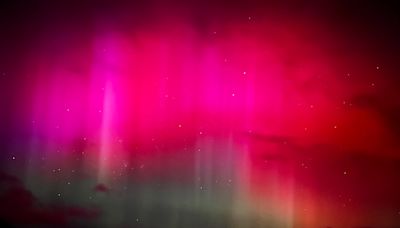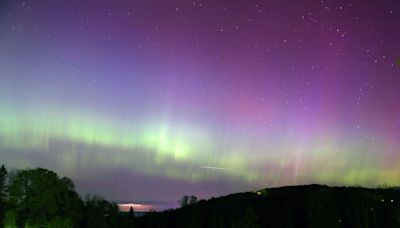Search results
People also ask
Is there a solar flare on the Sun?
What is the strongest solar flare since 2017?
Could a solar flare mean more Northern Lights Over the weekend?
Can a solar flare cause a blackout?
- Colossal sunspot AR3664 has unleashed its most powerful solar flare yet, and Earth is once again in the firing line. The X3.98 flare peaked in the early hours this morning (May 10) at 2:54 a.m. (0654 GMT) triggering either temporary or complete loss of high frequency (HF) radio signals across Asia, eastern Europe and eastern Africa.
www.msn.com › en-us › weatherBehemoth sunspot AR3664 unleashes its biggest solar flare yet ...
1 day ago · The flares seem to be associated with a sunspot that’s 16 times the diameter of Earth, NOAA said. It is all part of the solar activity ramping up as the sun approaches the peak of its 11-year cycle. NASA said the storm posed no serious threat to the seven astronauts aboard the International Space Station.
Find out the current space weather conditions and the levels of severity of the solar activity that can impact the Earth. See the bulletins, usage impacts, details and history of SWPC alerts, watches and warnings.
1 day ago · The huge solar storm is keeping power grid and satellite operators on edge. NASA's Solar Dynamics Observatory captured this image of solar flares early Saturday afternoon. The National Oceanic and ...
2 days ago · NASA’s Solar Dynamics Observatory captured these images of the solar flares, as seen in the bright flashes in the left image (a May 8 flare) and the right image (a May 7 flare).
- 9 sec
- Katrina Miller,Judson Jones
1 day ago · For Immediate Release [May 9, 2024] MEDIA ADVISORY. NOAA forecasts severe solar storm; media availability scheduled for May 10. NOAA’s Space Weather Prediction Center (SWPC) — a division of the National Weather Service — is monitoring the sun following a series of solar flares and coronal mass ejections (CMEs) that began on May 8.
See the latest solar X-ray data, live imagery and news of solar flares and coronal mass ejections. Find out the probability and timing of X-, M- and C-class flares today and in the past 24 hours.
2 days ago · The sunspot region AR3615, which has been active for several days, unleashed a large M7 flare and a jet of plasma on March 28, 2024. The flare caused a moderate radio blackout over the Indian Ocean and increased the chance of auroras on Earth.



